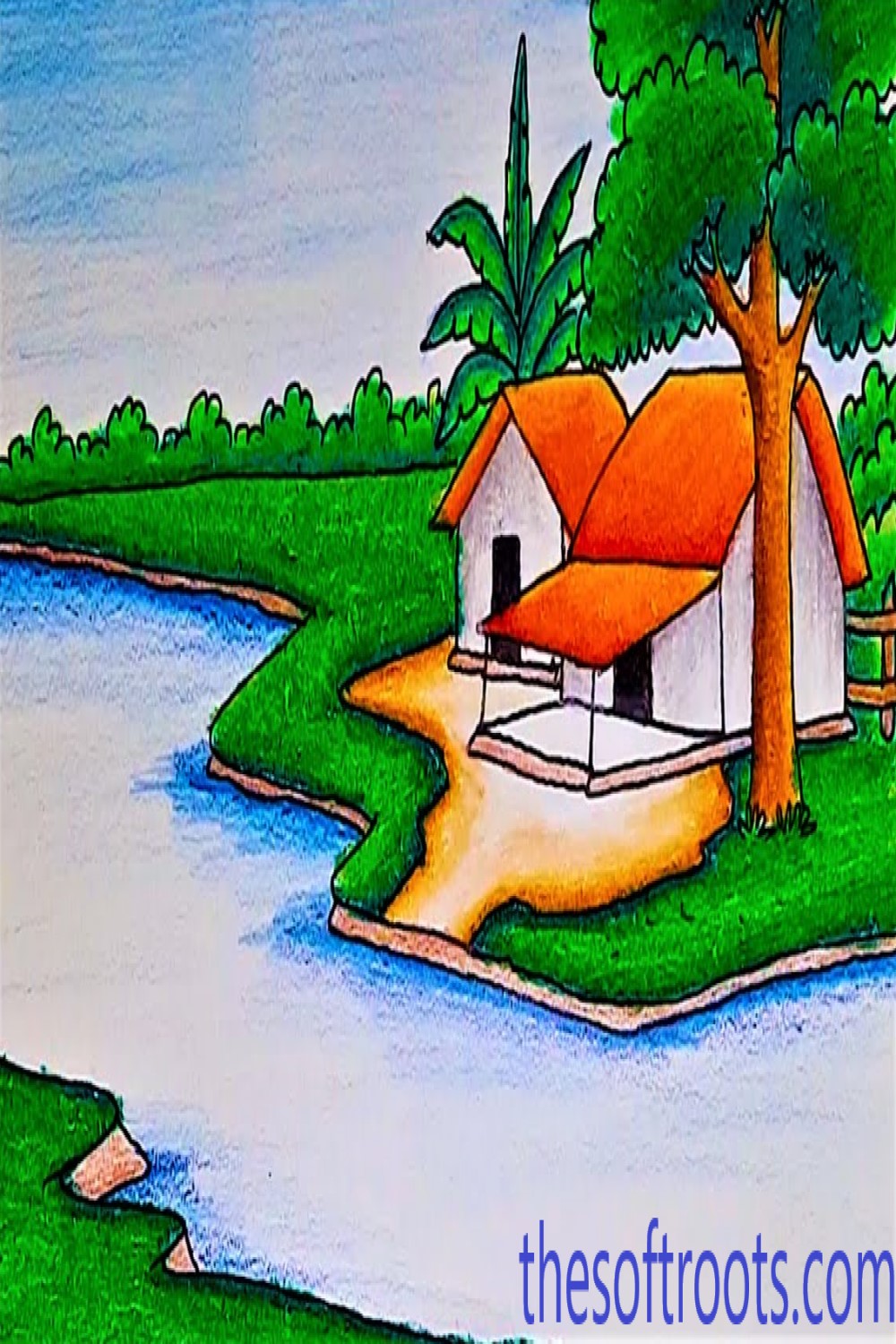DRAW A CLOUDY LANDSCAPE AND DRAWING IN DARK LIGHT USING THE ERASER

I am sharing with you today a cool drawing technique that, in my opinion, is accessible to everyone. I chose to draw a cloudy landscape with enough contrast to illustrate this drawing.
It is about working negatively to learn to draw in chiaroscuro, starting by darkening your drawing. In this type of drawing, it is important to differentiate between the different planes of your image. The foreground will be the darkest, the second a little less, the background will be the lightest area. Then bring out the areas of light in the clouds using the eraser. A very practical technique to obtain a nice rendering for your cloudy skies.
In the following video, I drew a landscape as an example:
Here is the step-by-step drawing technique:
1 / Trace your sketch very lightly without pressing too much. It is simply a question of delimiting the areas (earth, mountain, tree, sky, etc.)
2 / After drawing the different planes, make a medium gray flat area to delimit the sky.
3 / Work on the first and second shots by darkening your drawing (darker parts).
4 / Work the clouds with an eraser by pressing more or less hard. The more you force, the more you will bring out the white and, therefore, the light.
This drawing exercise is quite easy because you can rework each part with this method until you are satisfied with the result.
My goal here was not to make a masterpiece (the drawing of this landscape drawing has taken me about 10 minutes) but to explain this drawing technique to you. You can also use it to draw a high-contrast “Chinese shadow” portrait.
If your subject is suitable, you can achieve great results without too much work.
So do not hesitate to test by varying your subjects.
Act methodically
Technically progressing in drawing requires, above all, a solid working method.
You will tell me, nothing like a good teacher, but many people do not have the time or financial means or have not found this “famous” good teacher. Educational books can also help for serious learning. In the internet age, there are also a multitude of ways (this blog in particular;)) and resources to learn an artistic discipline.
Learning okay, but learning well is something else. So once again, take your level into account and never neglect the basics. If you don’t start by learning the fundamentals and don’t structure your learning, you risk moving from one technique to another, losing yourself (your time with it) without noticing any progress. In short, to move forward effectively, it is better not to skip the steps and start at the beginning. Deciding to devote 1 hour or 5 hours per week to draw does not necessarily give the same results. It’s up to you to find the right balance between what you can achieve technically and the time you are willing to invest in your passion. Anticipating this will prevent you from being disappointed and demotivated if your progress is slow when you have decided to devote only 30 minutes per week to your activity
Vary the subjects and drawing techniques
Above all, the artistic practice should be fun. It is necessary not to happen into a routine. For that, nothing like exploring other techniques and varying the tools. You risk nothing more than discovering another way of doing things that will fascinate you even more than the one you already know.
Likewise, focusing on one type of subject can initially be a way to progress in that specialty. But in the long run, it can dampen your creativity and cause serious blockages. You may eventually lock yourself into a style and have a lot of trouble getting out of it. While it is important not to disperse (as I said in the previous chapter), opening up to new horizons and changing your perspective is one of the engines to keep your motivation alive.
As you can see, I have largely put forward the notion of pleasure in this article. However, there is another key factor that should not (especially!) Be overlooked: work (yes, alas!). I understand that you are less enthusiastic hearing this word, but of course, it is the key to everything. Work and pleasure are often opposed because many of us do not have jobs that fascinate us. It is also why many people practice leisure time.
But pleasure and work are not so far apart, and practicing drawing and art is a very good way to combine these two notions. To conclude, work yes, but without having the impression of doing it;)


